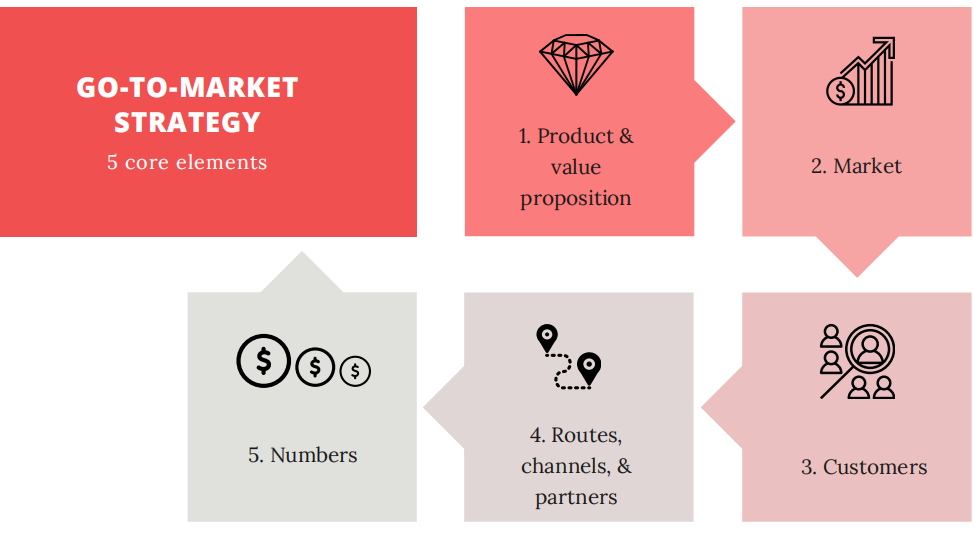A list of top dos and don’ts of international expansion to ensure your business success
80% of businesses fail.
When it comes to international expansion.
For over 15 years we have advised many small businesses on how to navigate the rough seas of international expansion. Our knowledge is based on our own experience, as well as lessons learnt from global companies who have tried and failed. In this article we have compiled the key dos and don’ts of international expansion.
DOs of international expansion
Do your research
Never underestimate the importance of undertaking market research in your target market. Detailed market research includes both primary and secondary research. Primary research is commissioned by you, with the purpose of collecting data for a specific objective. Secondary research entails examining and analysing existing data gathered by other sources. For example, at Bridgehead, one of the sources we use is Statista country or industry reports to learn key facts and figures.
You may find that secondary research isn’t specific enough to achieve your objective, and this is where primary research comes in. Be warned that conducting primary research is costly, therefore our advice is to ensure that you are clear on your objectives and outcomes.
Research allows you to make informed decisions. It enables you to gain a deep understanding of your target market and how your potential customers are likely to receive your product or service. Use the data gained to segment your customers, differentiate your product or service (develop your product and value proposition) and help you to develop marketing messages which will resonate with your audience.
Do focus on sales
At Bridgehead, we recommend that first and foremost, you need to focus on sales. Don’t get distracted at the early stages by other things on the to-do list, such as appointing lawyers and accountants, it isn’t necessary, yet.
BT once told us, “It’s good to talk.” so pick up the phone to speak to potential customers, win and secure those vital orders. If you are struggling to resource this, at Bridgehead, we have an experienced sales team who could provide assistance. When you use highly skilled and knowledgeable sales professionals, telesales is an excellent way to generate leads, set-up appointments, and nurture those newly formed relationships.
By showing a promising sales pipeline in your target market, it will prove to your leadership team that it’s worth the investment.
Do develop a Go-to-Market strategy
A Go-To-Market strategy is an action plan, laying out exactly how you will sell your product or service to your target market, in order to generate revenue. It’s worth checking out our blog on, why you need a Go-To-Market strategy. Your Go-To-Market strategy should cover 5 core pillars.

We have written in-depth articles on each of these pillars.
Having a clear plan provides direction and aligns all your stakeholders. It reduces your time to market your product or service, and increases your chances of a successful launch, ultimately, saving you money. To put it plainly, those businesses who succeed in international markets, will have a detailed Go-To-Market strategy.
DON’Ts of international expansion
Don’t ignore language and cultural differences
A lot of small businesses underestimate the resources required to navigate language and cultural barriers. Be mindful that even when countries share the same language, e.g., Canada, UK and the US, it doesn’t mean that there aren’t cultural variations between these countries. Read more on some of these unexpected cultural differences here.
We had a client who wanted to break into the US market, they were reluctant to change their packaging, which contained the phrase, ‘mummy.’ We recommended they change this to ‘mom’ which would resonate better with US customers. Once this was changed, US distributors were willing to take the product.
In a similar vein, we had a client who wanted to enter a highly competitive segment of the Nordic market. Initially they were hesitant to translate instructions into multiple languages. Our Go-To-Market strategy unveiled that to be regarded as a serious market contender and a leader in those markets, they would be expected to translate their instructions and offer local after-sales customer support.
Don’t do it alone
I’m sure most of you will be familiar with the phrase, “Two heads are better than one.” Most entrepreneurs will tell you that to succeed in business, you have to continue to expand your network. When small businesses succeed with international expansion, they have worked with trustworthy partners. If your target market vastly differs from your domestic market, then explore partnering with distributors, agents, resellers, or joint ventures. Even hugely successful global multinationals such as Netflix and Starbucks leverage local partnerships in each new market they enter. These partnerships should be founded on a win-win basis. To be successful it’s crucial to choose the right partner. Read our insights on how to choose the right partner.
Don’t assume that your successful business model can be replicated in a new market
The business model which has served you well in your home market, or any other markets you have entered, won’t necessarily be replicated successfully in your new target market. Successful international expansion requires extensive research and a tailored Go-To-Market strategy.
Learn from Walmart’s uninspiring attempt to enter the German market. In 1997, Walmart acquired two German retail chains, immediately giving them 85 stores across Germany. Their aggressive penetration pricing tactics were seen as a threat by their local competitors. After a legal battle, the German high court demanded that Walmart raise their prices, blunting one of the tools of their strategy.
Walmart also managed to alienate their employees by implementing Americanised staff policies, which their German employees found bizarre. For example, mandatory light exercise, daily ‘morning chant’ and a ban on employee romantic relationships. Lastly, German shoppers were not accustomed to the over-the-top friendly US-style greetings, and bag packing services offered to them. In the end, Walmart conceded defeat and pulled out of Germany in 2006, suffering a significant financial loss. [1]
How to succeed in international expansion?
International expansion doesn’t have to be a leap of faith, follow our advice to increase your chances of success. For an initial discussion, contact us today.
Further insights on international expansion
If you enjoyed our top DOs and DON’Ts of international expansion, join our Discovery Lite portal for free where you’ll get access to a monthly insights magazine and bonus downloadable materials to help your business reach new markets:
References:
[1] Better Marketing








